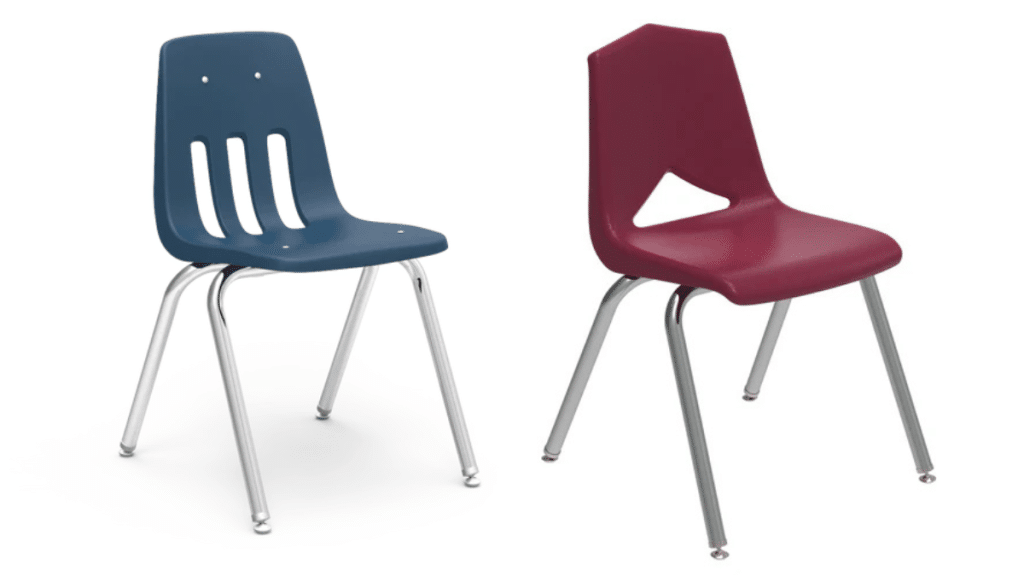Why School Chairs Are More Than Just Furniture
School chairs are one of the most utilized items in any educational setting. Yet, they often go unnoticed despite playing a crucial role in shaping how students feel, move, and learn throughout the day. As modern classrooms evolve to meet 21st-century educational standards, the importance of rethinking school chairs becomes even more apparent.
Gone are the days when a simple four-legged plastic seat could meet every student’s needs. Today, classroom environments require seating solutions that are flexible, durable, sustainable, and conducive to both physical comfort and academic performance. School chairs are no longer just about sitting—they’re about enhancing the entire educational experience.
The Rise of Ergonomic and Student-Centric Design
One of the biggest shifts in school furniture design is the growing emphasis on ergonomics. Chairs designed to support the natural posture of children encourage healthier sitting habits and better concentration. Unlike traditional static chairs, ergonomic school seating adapts to the diverse body types and movements of students throughout the day.
A well-designed ergonomic school chair typically features lumbar support, adjustable seat height, and a contoured seat base. These elements help reduce fatigue and promote active learning, especially during long classroom sessions. More and more educators are discovering how something as simple as the right chair can positively influence focus, energy levels, and student engagement.
Sustainable Materials Are Redefining School Furniture
As sustainability becomes a top priority in educational institutions, manufacturers are innovating with materials that are both eco-friendly and durable. Many of today’s school chairs are made from recycled plastics, responsibly sourced wood, and low-VOC finishes to minimize environmental impact.
Schools are also embracing cradle-to-cradle design principles, choosing furniture that can be disassembled and recycled at the end of its lifecycle. This sustainable approach not only reduces waste but also aligns with school-wide initiatives aimed at educating students about environmental responsibility. With growing awareness about climate change, opting for green furniture is no longer just a trend—it’s a necessity.
Versatility and Flexibility in Modern Classrooms
Classrooms today are more dynamic than ever. From collaborative group work to independent study, students engage in a variety of activities that require flexible seating solutions. Stackable, mobile, and swivel school chairs are becoming the norm, allowing teachers to rearrange spaces on the fly.
For younger students, kids learning chairs designed with bright colors and playful shapes add an element of fun while still maintaining essential ergonomic features. These chairs often incorporate rounded edges for safety, easy-grip handles for portability, and lightweight materials to allow even young children to move them independently.
In older classrooms, the focus may shift toward more refined classroom chairs with mesh backs for ventilation, padded seating for extra comfort, and built-in tablet arms for tech integration. These small design upgrades reflect the broader push toward student-centered learning environments.
How School Chairs Influence Classroom Culture
It’s easy to overlook the psychological and social impact of seating. Students who feel physically comfortable are more likely to participate, collaborate, and stay engaged. The layout of chairs can also encourage or discourage certain behaviors. For instance, a circular setup fosters discussion, while rows may work better for focused individual tasks.
The move toward inclusive design is also evident. Chairs that accommodate various body types and mobility levels help create a more equitable classroom. Whether it’s extra-wide seats, adaptive seating for students with disabilities, or simply offering choice in seating style, the modern classroom reflects a more thoughtful and inclusive approach to education.
Future Trends in School Chair Design
As schools continue integrating technology and adopting hybrid learning models, school furniture must evolve alongside. Chairs with built-in USB ports, storage compartments, or adjustable tech mounts are slowly making their way into forward-thinking institutions.
Biophilic design is another emerging trend, incorporating natural colors and textures to create a calming learning environment. Combined with sustainable materials, these designs make classrooms feel more inviting and less institutional.
Additionally, modular seating—where multiple pieces can be joined or separated as needed—is gaining traction in flexible learning environments. These chairs can transform from individual study stations to group work hubs in minutes, adapting to the needs of each lesson.
Making the Smart Investment
Choosing the right school chairs isn’t just about aesthetics or compliance with regulations. It’s about investing in tools that support student well-being, enhance learning, and reflect the values of the institution. From improving posture and focus to promoting sustainability and inclusivity, modern school chairs do much more than fill a room—they shape the future of education.
Whether you’re upgrading an entire campus or renovating a single classroom, the right school chairs can elevate your learning space into a place where students feel inspired, supported, and ready to succeed. As design and sustainability continue to lead innovation, these essential pieces of school furniture are proving they’re worth every penny.
